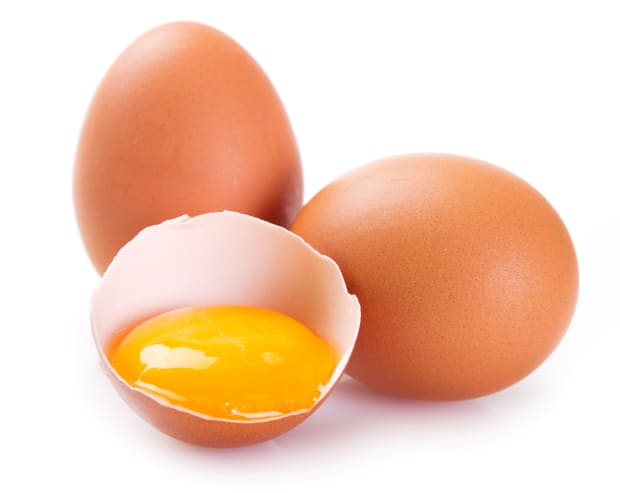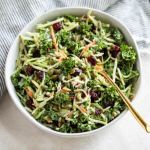- Like
- SHARE
- Digg
- Del
- Tumblr
- VKontakte
- Flattr
- Buffer
- Love This
- Save
- Odnoklassniki
- Meneame
- Blogger
- Amazon
- Yahoo Mail
- Gmail
- AOL
- Newsvine
- HackerNews
- Evernote
- MySpace
- Mail.ru
- Viadeo
- Line
- Comments
- Yummly
- SMS
- Viber
- Telegram
- JOIN
- Skype
- Facebook Messenger
- Kakao
- LiveJournal
- Yammer
- Edgar
- Fintel
- Mix
- Instapaper
- Copy Link
You’ve heard a lot about amino acids and how important they are for building muscle. But these building blocks of protein are responsible for many other critical systems and functions in the body, including neurotransmitter and hormone production, immune health, nervous system function, tissue repair, digestion, and reproduction.
When you eat foods that are high in protein, the body breaks them down into amino acids. Your body needs 20 different amino acids, which are categorized as essential, conditionally essential, or non-essential:
Essential amino acids are considered “essential” because your body can’t make them—you have to get them from your diet. There are nine of them: histidine, isoleucine, leucine, lysine, methionine, phenylalanine, threonine, tryptophan, and valine.
Non-essential amino acids are synthesized by the body, even if they’re not consumed in the diet. The eleven non-essential amino acids are alanine, arginine, asparagine, aspartic acid, cysteine, glutamic acid, glutamine, glycine, proline, serine, and tyrosine.
Conditionally essential amino acids, also called “conditional amino acids,” include some non-essential amino acids whose synthesis may be limited under certain conditions, including serious illness, injury, surgery, or extreme trauma or stress. For instance, tyrosine is considered an essential amino acid for people with phenylketonuria (PKU), a condition in which the body can’t synthesize tyrosine. Other conditional amino acids include arginine, cysteine, glutamine, glycine, proline, and serine.
You’ll find amino acids in a variety of foods, but there’s a catch: meat, fish, dairy, eggs, and other animal foods contain all nine essential amino acids and are considered complete proteins. Some plant foods—including soy and quinoa—contain all nine essential amino acids, but there’s some debate over whether they contain adequate quantities to be considered complete proteins. Beans, grains, and nuts are also rich in certain amino acids, but are low or lacking in others—called the limiting amino acid. For example, beans are low in tryptophan and methionine, and grains, nuts, and seeds lack lysine.
If you eat a variety of plant-based proteins, it’s easy enough to compensate for limiting amino acids and get all nine essentials—and you don’t have to eat them all at the same meal. Here’s a guide to the best food sources of amino acids, and ways to add them to your diet.
1. Tofu
Tofu contains all nine essential amino acids, as well as calcium, iron, and other nutrients. Edamame and tempeh are other good sources of protein and amino acids. Look for tofu made with calcium sulfate for the highest calcium content.
Recipe Tips: Sauté tofu cubes with garlic, red pepper strips, and scallions, then toss with cooked rice noodles and sesame seeds; crumble tofu and simmer in tomato sauce with onions, garlic, and paprika, and serve over rice; toss edamame with quinoa, shredded red cabbage, carrots, red onions, and cilantro, and dress with a sesame oil vinaigrette.
2. Eggs
Eggs are high in all nine essential amino acids, as well as other nutrients such as choline, lutein, and zeaxanthin. Look for pastured or true free-range eggs from chickens allowed to roam freely outdoors and graze on grass, seeds, and insects—some studies suggest they’re higher in omega-3s and significantly higher in vitamin D.
Recipe Tips: Serve soft-poached eggs over sautéed escarole and radicchio, and top with grated Asiago cheese; halve boiled eggs and mash the yolks with avocado, shallots, and green Tabasco sauce for spicy deviled eggs; whisk eggs with almond flour, cheddar cheese, and minced chives, and cook in a waffle iron.
3. Grass-Fed Beef
Grass-fed beef is a complete protein that has a superior nutritional profile as compared to grain-fed beef, with less total fat and saturated fat, and higher levels of omega-3 fats, vitamin E, and other antioxidants.
Recipe Tips: Sauté thin strips of beef with broccoli, mushrooms, ginger, garlic, tamari, and sesame seeds; cook ground beef with crushed tomatoes, olives, capers, garlic, anchovies, and red pepper flakes for a spicy puttanesca sauce; simmer lean beef with barbecue sauce in a slow cooker, then shred and serve on slider buns with coleslaw and pickles.
4. Buckwheat
Buckwheat, in spite of the name, is gluten-free. Technically not a cereal grain, it comes from a plant related to sorrel and rhubarb. It’s high in most essential amino acids and is also rich in polyphenols, fiber, magnesium, and other nutrients.
Recipe Tips: Toss buckwheat with shredded Brussels sprouts, hemp seeds, cherry tomatoes, and chickpeas, and dress with an olive oil vinaigrette; top buckwheat with yogurt, frozen blackberries, and chia seeds for an easy breakfast bowl; toss buckwheat with roasted golden beets, arugula, red onions, and olive oil.
5. Pistachios
Pistachios are not actually nuts; they’re the seeds of fruit from the pistachio tree that have a well-rounded content of essential amino acids. They’re also rich in potassium and monounsaturated fats, as well as lutein and zeaxanthin. Combine them with beans or grains to form a complete protein.
Recipe Tips: Add toasted pistachios, minced dried apricots, cardamom, and cumin to brown rice for a Middle Eastern side; grind pistachios into a meal and use as a coating for grilled chicken or fish; combine pistachio butter with apple cider vinegar and honey for a creamy, protein-rich salad dressing.
6. Cottage Cheese
Cottage cheese, like other forms of dairy, contains all nine essential amino acids, as well as calcium, selenium, vitamin B12, and other B vitamins. Look for organic varieties, or try probiotic-rich cultured cottage cheese.
Recipe Tips: Mix cottage cheese with chia seeds, frozen berries, and oats for a breakfast bowl; mash cottage cheese with avocado and spread on toast; add it to sautéed garlic, onions, frozen spinach, and curry powder for a quick palak paneer.
7. Quinoa
Quinoa is rich in protein and contains all nine essential amino acids. It’s used as a grain, but is actually a seed from a plant that’s related to spinach and chard, so it’s naturally gluten-free. Quinoa is also a great source of fiber, potassium, iron, and other key nutrients.
Recipe Tips: Grind quinoa into flour and use as a pancake base with blueberries, vanilla, and honey; mix quinoa with lentils, ground pumpkin seeds, mushrooms, and onion, form into burgers and grill; toss quinoa with cherry tomatoes, shallots, basil, feta cheese, and olive oil.
8. Hemp Seeds
Hemp seeds are rich in protein and amino acids, as well as magnesium, zinc, iron, B vitamins, and omega-3s. Combine them with beans for a complete protein.
Recipe Tips: Toss hemp seeds with black beans, corn, red peppers, cilantro, and honey-lime vinaigrette; top oatmeal with raspberries, hemp seeds, and honey; sauté chard, red lentils, and garlic, and top with hemp seeds.
Click here for the Corn and Quinoa Chowder recipe


